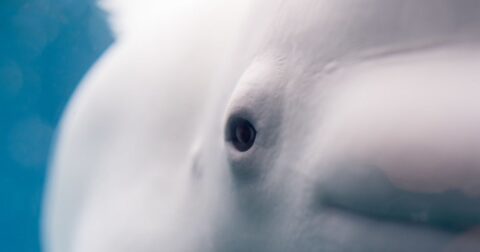Perspective
The Myth of the Cowboy and Its Enduring Influence on Public Policy
Meat Lobby•7 min read
Solutions
Marine sanctuaries are a critical yet costly solution.


Words by Jessica Scott-Reid
The 38-acre oceanarium known as the Miami Seaquarium has been ordered to close. Last month, after a series of federal inspections found the facility in disrepair, and the welfare of its animals in jeopardy, the decades-old entertainment center had its lease terminated by the Miami-Dade County mayor’s office. Meanwhile, north of the border, headlines suggest a similar fate for Canada’s Marineland. While much of the public has shown greater disdain for keeping marine animals in captivity, a new conversation is beginning to emerge. Researchers and advocates are now grappling with what will happen to all the captive whales, dolphins and other animals if these facilities close.
For the vast majority of marine animals born in captivity and dependent on people for survival, returning to the wild is not an option (save for some fish). So, where can they go?
In conversations with five experts, the one clear answer to emerge is that there does not appear to be one answer. This is because, as ecologist and science writer Spencer Roberts tells Sentient, each animal is unique, as is their current status and future needs. “Treatment for animals in derelict aquaria like Seaquarium and Marineland is delicate and complex,” he says. “It truly has to be approached on a case-by-case basis.” However, there does appear to be some general consensus on what might be the best-case, worst-case and most realistic scenarios. But the very worst case scenario for all of these captive whales, dolphins and other animals, would be mass euthanasia — on this our experts agreed.
The best option for captive animals in need of new homes, according to most of our sources, is for animals to be relocated to sanctuaries that will allow them to safely live in their natural environments, while still receiving necessary care from humans.
At the moment, there exists one such place for beluga whales, off the coast of Iceland in Klettsvik Bay. Two belugas, Little White and Little Grey, who were captured off the coast of Russia before being sent to a park in China, now live in a tank on land at the facility. They are currently working to build up the health and stamina needed to live in the sanctuary bay after so many years in tanks, following an unsuccessful attempt to return them to the water last year.
For dolphins, one sanctuary is currently developed by the Baltimore-based National Aquarium, to be located in the Caribbean, and another whale sanctuary is being developed off the coast of eastern Canada. “We at the Whale Sanctuary Project are preparing a sanctuary for belugas and orcas in Nova Scotia,” explains Dr. Lori Marino, founder and president of the project. She adds that her team has “expressed our interest in some of the Marineland Canada belugas over the years. We would be able to welcome several of them.” Marineland, for its part, denies the rumors of an imminent closure.
Marino, who is also a neuroscientist specializing in animal behavior, sees the general transfer of captive cetaceans to sanctuaries as a two-step process. “First is a complete health assessment of all the whales, and then veterinary intervention to get the whales as healthy as possible while learning behaviors that they need to perform to be transferred,” she says. “Second, they would go to coastal sanctuaries to live out their lives.”
But as Marino recognizes, “This means that we need many more sanctuaries than we currently have.” There are an estimated 350 or more whales in captivity worldwide, over 3000 dolphins, and many other animals such as sea lions and walruses.
The reality is that sanctuaries cost money — millions of dollars, in fact — to create and maintain. The Whale Sanctuary in Nova Scotia is funded by private donors, but Camille Labchuk, executive director of Canadian animal law organization Animal Justice, tells Sentient that government funding should help support captive animals in need of new homes. “Placing dozens of marine mammals and hundreds of land mammals and birds is a massive task,” she says, “and we believe governments should step in to play a role and help come up with solutions.”
That means, as Labchuk told The Globe and Mail last year, “governments should step in to fund and expedite seaside sanctuaries, and force places like Marineland to help pick up the tab through reparations for the decades of harm they have caused to these smart and sensitive animals.”
Sanctuaries also take time to develop – lots of it. The Whale Sanctuary Project has been in the works for at least seven years, and is still not up and running. Originally slated for operations to begin by 2023, the sanctuary has no official opening date. “Many sanctuaries have been proposed by various charities, but persistent environmental, political and financial challenges have proved those as unviable, at least in the near future,” says Phil Demers, a former trainer at Marineland, turned whistleblower. “More and more animals are needing help and fewer places are capable of offering it,” Demers adds.
While moving thousands of animals to newly built sea-based sanctuaries seems like a far off endeavor, the next best option, explains Roberts via X (formerly known as Twitter), may be to have facilities like the Miami Seaquarium renovated to transition to a sanctuary model.
Sanctuaries prioritize the needs and wellbeing of animals over the desires of a paying public. For example, according to non-profit advocacy group Dolphin Project, at sanctuaries “every attempt is made to make the dolphins’ lives as natural and independent as possible,” which includes not allowing visitors (permitting for educational purposes only) to interact with the animals, nor requiring animals to perform. “It is a place where the dolphins’ needs are met with no strings attached,” it states online, and “makes educational material available to the public about the wrongs of capturing, confining, breeding, and exploiting dolphins in shows and various interaction programs.”
Since there aren’t enough operational sanctuaries to house the marine animals who may come from closing entertainment parks in the future, transitioning existing facilities into sanctuaries could be a way to fill the gap. But this would be a pretty massive undertaking, requiring extensive changes to both infrastructures and staffing. Once again, this takes time and money — a luxury that the animals at the Miami Seaquarium and perhaps Marineland don’t have.
Veterinarian Dr. Crystal Heath, who is also executive director of non-profit vet advocacy group Our Honor, says a more realistic solution for captive marine animals might be to place them at institutions accredited by the Association of Zoos and Aquariums. AZA accreditation “recognizes institutions that meet the highest professional standards for animal welfare, scientific education and staff training,” states the organization online.
The Miami Seaquarium is not AZA accredited, along with most existing parks. “Less than ten percent of the 2,800 wildlife exhibitors licensed by the United States Department of Agriculture under the Animal Welfare Act meet the more comprehensive standards of AZA accreditation, as per their website,” says Heath. (AZA facilities do still participate in breeding and selling animals, euthanizing “overstock” animals, and holding animals captive for their entire lives.)
Sending marine animals to a kind of transitional facility if there’s not enough room at a sanctuary sounds like a promising solution, but the transition process could take years, if it happens at all. So while it sounds like a good idea, says Phil Demers, who is now an advocate for ending parks like Marineland or Seaquarium, this scenario could end up recreating sea park conditions. The bottom line, Demers explains, “we have a perpetual problem until something drastically changes.”
For now, a number of researchers and advocates are also working to ban marine entertainment parks outright. And they’ve had some success. The Canadian government has already enacted a ban against imports of whales, dolphins and porpoises, along with breeding within the country — an effort spearheaded by Animal Justice. Several other countries have also implemented bans or strict regulations on whale and dolphin captivity, including the UK, India, Switzerland, South Korea and France.
Ultimately, as marine parks continue to fall out of public favor across much of North America, more of these entertainment spots will shutter, either now or at some point in the future. The question of what to do with all of the captive animals will have to be answered, even as costs and challenges remain.
Update: this piece has been updated as a previous version of this story cited a media report that the Whale Sanctuary Project would not open until 2027. The sanctuary disputes this as noted here, though there is no official opening date.